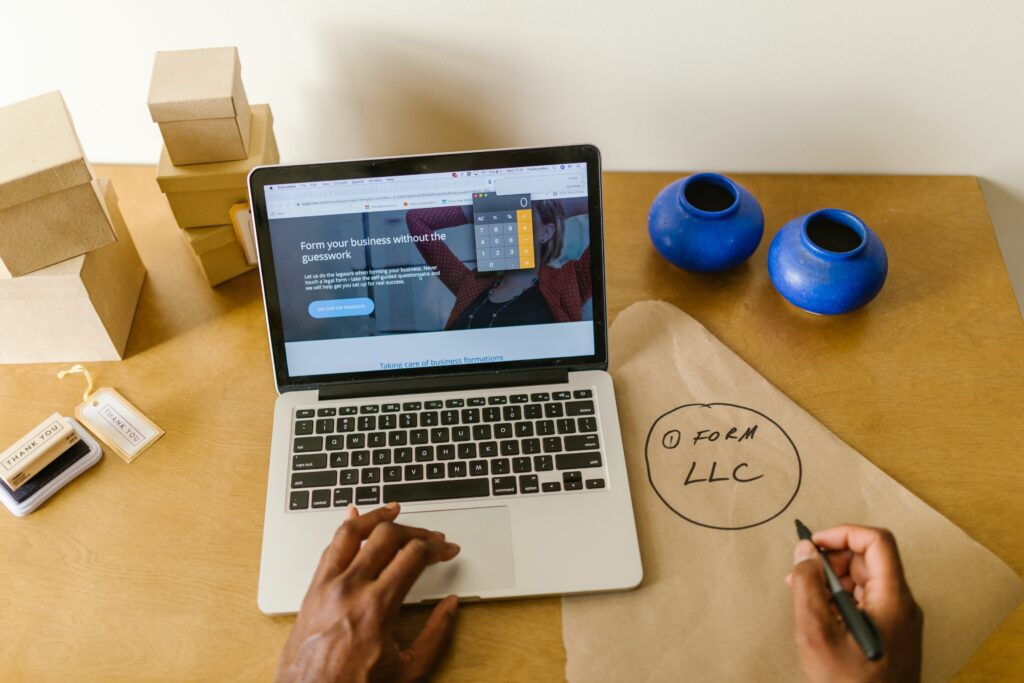
The Three Things Your Homepage Needs in Order to Successfully Hook Your Audience

When a customer lands on your homepage, they will decide, within seconds, whether or not they want to stay on your site and learn more about your business, product, and services; or go elsewhere. So, right off the bat, your homepage needs to introduce your product or service and entice each and every visitor to want to explore your site further.
Your homepage is where you’ll be drawing in most of your website traffic, so it’s your homepage’s responsibility to introduce your business or brand to potential customers. As a business owner, you want your homepage to convert as many website visitors to leads, so optimizing your website’s homepage is important.
Your homepage will have many different uses for your audience at any given point. Therefore, we encourage you to shift your view from treating a homepage as a landing page to treating it as a hub where you serve each of your audience types.
Now, how do you optimize your homepage to hook your audience? First, you need to know your business’s purpose, and then you need to know your customer. If you need more information on finding your target audience, we wrote a couple of blogs all about finding and specifying your target audience:
- Marketing Hack – Three Ways to Research Your Ideal Audience and What you Should be Looking for
- Do you Really Know Your Audience or Are you Just Guessing?
We recommend you reference these blogs to understand who your target audience is so that you can better speak to them within your website content.
Overall, your homepage must incorporate elements that encourage your audience to stay on your website – you can do this through Q&As, blogs, free resources, etc. You want these elements to help convert those visitors into customers.
While there are so many ways to optimize your homepage, we’ve chosen to expand on three ways to optimize your homepage that should act as a good starting point to hook your audience successfully.
Table of Contents:
- It’s All in the Headline
- Guide Your Visitors with a Call to Action
- The User Experience & Building Trust
It’s All in the Headline
Your homepage needs to communicate what you offer within seconds of someone landing there. One of the most efficient ways to do that is through your heading and subheadings.
Your headlines will clearly describe your business, what it does, what it believes in, and anything else you want to convey. Direct and concise headlines help visitors quickly skim through your content to see if your website is relevant to them and their needs.
Headlines are typically quick and to the point. They are only a few words or can go up to a couple of sentences. Regardless of how long your headline is, it needs to quickly tell your visitor what your business has to offer.
So many people will visit a website and quickly scroll through the copy to see how relevant the website is.
Two Trees PPC Tip #1: When writing your headline, ensure that you include keywords to help potential customers decide if you are the right fit. You want your headlines to be simple yet powerful.

In addition to your headlines, you have subheadings. A sub-heading should support your initial headline. You want your sub-heading to tie into your main heading and keep your readers on track. For example, if your homepage is focused on a product, your heading could be the product name and a brief overview, and your sub-headings would be the price, benefits, size, etc.
When putting together your headlines on a mobile device or desktop, ensure they are optimized. This means having each heading or subheading stand out with larger font or a different color. While your content is vital, the graphics will help provide a better user experience.
Guide Your Visitors with a Call to Action
Next is your call-to-action (CTA).
A call-to-action is anything that prompts the reader to make an immediate response. Remember, you can have the best, most educational and thoughtful content, but if there’s no CTA, your audience will not know what to do next.
Your headlines are meant to guide your website visitors through your page so that they can quickly and easily draw an understanding of your business, and a call to action is intended to direct them to take action afterward.
The goal of your website homepage is to garner visitors’ interest and encourage them to go deeper into the pages of your website. CTA’s are how you can encourage them. When a website visitor clicks on a call-to-action, this helps move them through your sales funnel. For example, if they were initially a website visitor, but signed up for a newsletter, now they’re a warm lead.
A call-to-action is one way to encourage visitors to move through your website and look at different pages. It’s meant to begin the selling cycle or initiate direct contact between you, the business owner, and the website visitor.
CTAs can look like hyperlinked text or buttons at the end of the copy. They can direct the reader to a:
- Contact form
- Newsletter subscription forms
- Work with us page
- Your blog
- Social networks
Or any other page within your website that would provide more information to your audience.
The easier and more intriguing you make your headlines and call-to-actions. The more likely your website visitors will spend their time browsing your website and exploring the information you have provided.
On your homepage, try to include 2 to 3 different CTA’s above the fold. When we say “above the fold,” we are referring to the area a website viewer sees on their desktop or mobile device before they need to scroll.
These CTAs should direct people to different stages of the buying cycle or different places on your website.
Ensure that your CTAs are easily noticeable so that your website visitors will know to click there. A call-to-action should also be visually appealing, so you want to include aspects of your brand like the color scheme while still having it contrast against your website so that it’s noticeable.
You want your CTA buttons to feel like it is a seamless part of your website design while still drawing your visitor’s eyes to that button.
Two Trees PPC Tip #2: Keep your call-to-action copy brief. There should be no more than five action-oriented words so that a visitor can click a button and know exactly where they will go.
A few examples of a call-to-action would be:
- Make an Appointment
- Subscribe to our Newsletter
- Read More
- Contact Us
- Sign Up
The User Experience & Building Trust
Lastly, the user experience, specifically how your website supports your visitors. Your website should be optimized to help visitors and build trust. This can look like having a website with imagery, listing the benefits of your product or service, any resources available, and any testimonials that you can provide.
Each of these additions is meant to build trust and credibility. Below, we’ll expand on each of these, why it’s beneficial to your audience, and how it helps build trust.
- Imagery
- Benefits
- Resources Available
- Testimonials
Imagery
People are incredibly visual, so you want to have ample imagery on your homepage (and website overall). A photo of your team, someone using your product, or your clients is better than stock imagery. Stock imagery is harder for people to connect with. Humans are drawn to images with people in them because we instinctively make connections empathizing with them.
Additionally, photos give you a sense of credibility and integrity which is vital in building trust. You can use images to convey emotion and drive traffic. Images can help tell a story or act as a call to action.
Because most people are visual, make sure to use an image (or even a video) that indicates what you offer.
Two Trees PPC Tip #3: Optimize your images for desktop and mobile users. “55% of page views in 2021 come from mobile phones (source).” Ensure that the imagery you use is high-quality and includes alt text and is compressed (if needed).
Benefits
Next, you want to share the benefits of using your product or service -outline why your customer should want to work with you, how they benefit, and why you do what you do. Potential customers want to know the benefits of working with you versus any of your competitors.
Now more than ever, people want to work with brands that align with their beliefs. So take time to speak about the benefits of working with your and your company’s overarching beliefs.

Your business’s benefits and beliefs are important when building trust and community. People want to know where their money is going and who they are supporting – by talking about the benefits of working with you and your beliefs, you can build a deeper connection with any potential customers.
Remember to keep the copy lightweight and easy to read. As mentioned, knowing your target audience is essential when speaking to them. The best way to connect with your audience is to take the time to get to know them.
Resources
Often you will have visitors who visit your site who may not be ready to buy…yet.
They could be:
- Shopping their options
- Looking to learn more about you and your business.
- Looking for information on a specific topic that you work with
Two Trees PPC Tip #4: On your homepage, we recommend linking to resources that would be relevant to your audience.
Creating and sharing resources is beneficial because it establishes your credibility and trust as a leader in your industry and encourages visitors to spend more time on your website.
Testimonials
One of the last ways to create a better user experience and build trust is to provide testimonials or client reviews.
Testimonials are a form of social proof and another way to stimulate trust and establish your expertise within your industry.
Testimonials show new visitors that:
- You know what you’re doing
- You can provide key insights on the product or service
- They’ll have a positive user/customer experience.
Including success stories on your homepage starts any business relationship off positively!
Two Trees PPC Tip #5: Reach out to any past or existing clients to see if they would be interested in submitting a testimonial. We also recommend including the option to submit a testimonial in your offboarding procedures.
Your homepage is one of the first introductions a visitor or potential customer will have to your business. Ensure that you optimize your homepage so that you have a great first impression for each visitor that is directed to your website. Your homepage should help them understand what you sell, why it matters, and how they will benefit from it.
Before your audience decides they want to work with you, they will look towards your homepage to find out what your business does and if it’s relevant to them. They will quickly look at your website and decide within seconds if you are the right fit for their needs. Create an inviting, easily digestible homepage that includes headers, call-to-actions and builds trust with your audience.
Are you looking to optimize the homepage of your website? Here are Two Trees PPC; we work with businesses and brands alike to create an optimized and seamless digital experience for their customers.
If you’re interested in optimizing your homepage, putting together a digital marketing plan, or improving your digital advertising, we encourage you to schedule a complimentary call with us today!
If you’re not quite ready to take that next step, join the conversation on LinkedIn to learn more about digital marketing. Share your experience and hear from other marketers about their homepage optimization, any challenges they have faced, and all our tips and tricks to improving your digital marketing.


